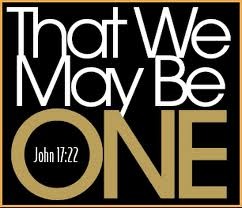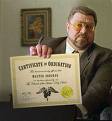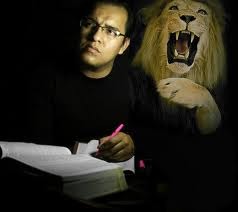Will This Next Movement Of God Bring Unity Of Language?
 Many of my generation of church goers fear speaking in tongues, some even to the point of being in denial claiming it “died” when the original 12 apostles died, failing to recognize that millions of Christians world wide speak in tongues. But this exemplifies the gap in the church’s mindset culturally today of my generation. American culture says if it fits my American culture and I see it in my experience (of course, grounded in the Word of God, the Bible, Amen!), then it is relevant and correct. If I do not “see” tongues in my church, then it does not exist! That’s my generation’s mentality. Tongues was looked upon as “unintelligent gibberish” that needed “interpretation” in ones own personal language and dialect so all could understand it. The first century Church’s experience with tongues is believers speaking in languages they did not know and all kinds of people of different language and dialect understanding their message. This is how the Church was birthed. Tongues to the “twenty-teeners” is the art of “communicating” with the rest of the “world” through the internet and social networking in their cultural language, yet all speaking the language of Jesus Christ. That language will not be in American English culture as the internet is now positioned, but in a language transcending the American culture where churches in China, Asia, South America, Third World Countries, tell Americans about their faith and how to walk it out. The Church will begin to speak the language of “Jesus” supernaturally by his Holy Spirit.
Many of my generation of church goers fear speaking in tongues, some even to the point of being in denial claiming it “died” when the original 12 apostles died, failing to recognize that millions of Christians world wide speak in tongues. But this exemplifies the gap in the church’s mindset culturally today of my generation. American culture says if it fits my American culture and I see it in my experience (of course, grounded in the Word of God, the Bible, Amen!), then it is relevant and correct. If I do not “see” tongues in my church, then it does not exist! That’s my generation’s mentality. Tongues was looked upon as “unintelligent gibberish” that needed “interpretation” in ones own personal language and dialect so all could understand it. The first century Church’s experience with tongues is believers speaking in languages they did not know and all kinds of people of different language and dialect understanding their message. This is how the Church was birthed. Tongues to the “twenty-teeners” is the art of “communicating” with the rest of the “world” through the internet and social networking in their cultural language, yet all speaking the language of Jesus Christ. That language will not be in American English culture as the internet is now positioned, but in a language transcending the American culture where churches in China, Asia, South America, Third World Countries, tell Americans about their faith and how to walk it out. The Church will begin to speak the language of “Jesus” supernaturally by his Holy Spirit.
 The Great Commission is looked upon generationally differently today. My generation looks at it as the physically “sent out” generation of missionaries, people called, commissioned, and financially supported by local churches. Once sent out, the local church would only see them every five years when they would have to return to “build up their financial support.” Parachurch ministries such as Mission Aviation, Wycliff Bible Translators, Youth With A Mission, or even Compassion International were all effective tools of mission work to my generation.
The Great Commission is looked upon generationally differently today. My generation looks at it as the physically “sent out” generation of missionaries, people called, commissioned, and financially supported by local churches. Once sent out, the local church would only see them every five years when they would have to return to “build up their financial support.” Parachurch ministries such as Mission Aviation, Wycliff Bible Translators, Youth With A Mission, or even Compassion International were all effective tools of mission work to my generation.
 Today the “twenty-teeners”, can do “mission” work right from their Iphone. Their mindset of the Church is naturally global, not small town community as their grandparents. The World Wide Web allows them to communicate literally with the world through all kinds of social platforms. Their mentality is that they can be in touched with an actual Nigerian, relationally building conversations with them, rather “sending out” missionaries. This generation “sends out” texts, tweets, blogs, Facebook messages, etc. to the actual people in their native land, a totally foreign concept to my generation. Instead of funneling through a missionary, they can have direct contact with the actual people in their native culture, working out their faith in their culture.
Today the “twenty-teeners”, can do “mission” work right from their Iphone. Their mindset of the Church is naturally global, not small town community as their grandparents. The World Wide Web allows them to communicate literally with the world through all kinds of social platforms. Their mentality is that they can be in touched with an actual Nigerian, relationally building conversations with them, rather “sending out” missionaries. This generation “sends out” texts, tweets, blogs, Facebook messages, etc. to the actual people in their native land, a totally foreign concept to my generation. Instead of funneling through a missionary, they can have direct contact with the actual people in their native culture, working out their faith in their culture.
This also breaks down denominational lines. Missionaries in the foreign field have “tolerated” each other even if from different persuasions of Christianity for the sake of the gospel as they work toward a common goal of sharing Jesus with a foreign culture to theirs. Today, the “twenty-teeners” don’t care for labels, so when social networking, they don’t care what Christian label you carry; they only social network about their relationship with Jesus in their culture to another culture. “Twenty-teeners” are actually more “engaged” in the actual missions process than my generation. They can learn about cultures other than their own easier through internet connections than my generation ever dreamed of doing. The world is their stage, not the small confines of the local community as my generation found itself.
 “Twenty-teeners” don’t try to change culture, only change lives in any culture for Jesus Christ. Early missionaries to the Americas tried to change Indian culture to European Christian culture. The same is true with many missionaries to third world countries. The “twenty-teeners” will try to change any culture into “kingdom of God” culture that transcends any foreign culture to oneself. The American way is not the “kingdom of God” way, nor is the European way, as the westernized church has forced on the world so far throughout history.
“Twenty-teeners” don’t try to change culture, only change lives in any culture for Jesus Christ. Early missionaries to the Americas tried to change Indian culture to European Christian culture. The same is true with many missionaries to third world countries. The “twenty-teeners” will try to change any culture into “kingdom of God” culture that transcends any foreign culture to oneself. The American way is not the “kingdom of God” way, nor is the European way, as the westernized church has forced on the world so far throughout history.
Paul learned that “Jewish culture” was not the new “kingdom of God” culture although that was the culture he was familiar with. He once was the “Pharisee of Pharisees”, the ultimate religious leader of his former culture, but Jesus knocked him off his horse, and completely new mindsets of “kingdom of God” thinking had to be established in his life. In fact he transcended the culture so both Jews and Gentiles could be part of the “kingdom of God”, something he had to defend at the Counsel in Jerusalem in Acts 10.
Generationally, today the Church is in a period of rapid transformation from being a “westernized” religion, or a historically Jewish based religion, to a “world wide” religion with powerful implications. The world wide culture is only being established now, and the Church needs to be a defining part of that! Reformation always comes when the Church took new technology to advance the “kingdom of God”, them empowerment of the “priesthood of believers” who would effect not only their culture, but other cultures foreign to their previous experiences. Lord, thank you for letting us enter the birthing of a World Wide Reformation.








































































